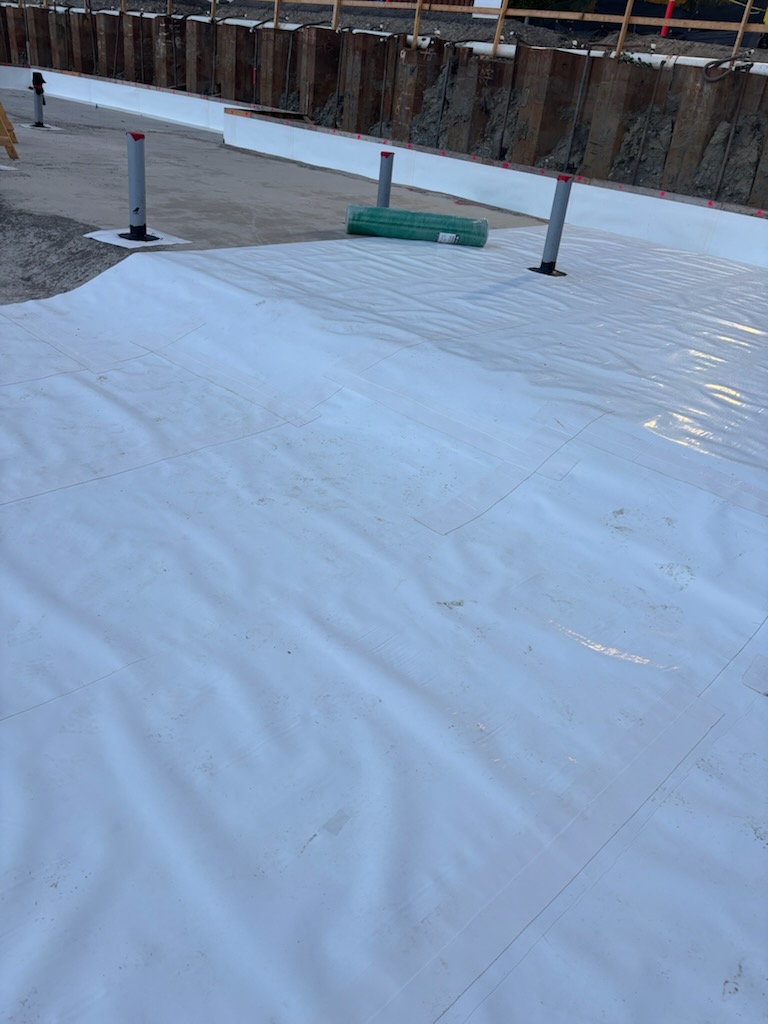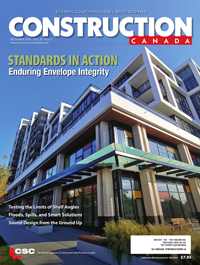Advancements in efficient stormwater management in vegetated roofing
Research and analyses
As the needled manufacturing process does not require binders, it ensures the product’s natural hydrophilicity remains intact, making it highly reliable for long-term stormwater management performance in vegetated roofs (Figure 2 and Figure 3).When it comes to long-term water absorption, research shows needled mineral wool designed for growing plants outperforms traditional horticultural RMW by up to three times. Water uptake (WOK) analysis is used to determine this. This method shows the velocity of water absorption in time for specific substrates. After saturating and drying out, the capacity of absorption is measured for 1500 minutes. The results show long-term water absorption of needled mineral wool for growing plants is 70 per cent, whereas traditional phenol-based horticultural mineral wool absorbs significantly less—between 20 and 35 per cent. (Water uptake analysis test method developed by Regeling HandelsPotgronden [RHP], Netherlands.)
As experience and numerous studies show, RMWs using binders are commonly recognized as products for hydroponic growing, and the needled or binderless type—due to its unique characteristics—is ideal for outdoor environments. For example, it can be used in vegetated roofs for significant improvement of stormwater performance and roof longevity in different climate zones.
Research indicates RMW positively influences plant growth and development on vegetated roofs as well as in other applications. (From D. Majkovič et al.’s 2016 presentation, “Promote Vegetated Roof Stormwater Performance with Mineral Wool Layer,” from Cities Alive in Washington D.C. this past November. Also from C. Arkar et al’s 2015 publication, “Lightweight Green Roofs’ Thermal Response Under Freezing Conditions,” from Energy Procedia 78.) It also showed great potential in container substrates as an alternative growing medium in the 1990s. (The study that determined this can be found in W.C. Fonteno and P.V. Nelson’s Physical Properties of and Plant Responses to Rockwool-amended Media, published in 1990 by the Journal of the American Society for Horticultural Science.) Applications of the new generation of needled RMW confirms this finding. (See A. Šušek et al’s presentation from Ramiran 2015 at the Hamburg University of Technology, “The Impact of Rock Mineral Wool on Water Retention in a Conventional Growth Medium, and Development of Zonal Pelargoniums.”)
Vegetated roofs constructed with binder-free needled mineral wool are tested and have been applied in various climate zones from moderate to extreme. Going forward, the focus continues to be on stormwater performance in retention testing, where vegetated roofs with a needled mineral wool layer are compared to traditional, engineered-growing-media-based vegetated roofs. One stormwater testing laboratory in Virginia (Figure 4) uses custom technology to apply replicable computerized rain events mimicking real-life rain events to evaluate assemblies 7.5 m2 (80 sf) in size.
In Figure 5, the quantity of water retention and transient water is shown as measured on those samples in 90 minutes. Full and dotted blue lines represent the values for a vegetated roof with a binder-free needled mineral wool layer, which is nearly doubled in stormwater performance compared to a 101-mm (4-in.) vegetated roof with traditional engineered growing media only (shown with grey full and dotted lines in Figure 5). The mineral wool layer does not significantly affect the dynamics of the release, but strongly influences the quantity.
The second graph (Figure 6) indicates stormwater performance is equivalent between a 101-mm vegetated roof with a needled mineral wool layer to which 272.5 L (72 gal) is applied after 90 minutes (again, shown with blue full and dotted lines) and a 203-mm (8-in.) vegetated roof without a mineral wool layer (with 257 L [68 gal] applied after 90 minutes). Introducing the needled mineral wool layer on the roof leads to significant load savings and the possibility of applying this solution when retrofitting. (One cubic metre of the mineral wool layer weighs approximately 10 times less than the same amount of soil [110 kg (242 lb) versus 900 to 1200 kg (1984 to 2645 lb)].)
The specified slider id does not exist.



